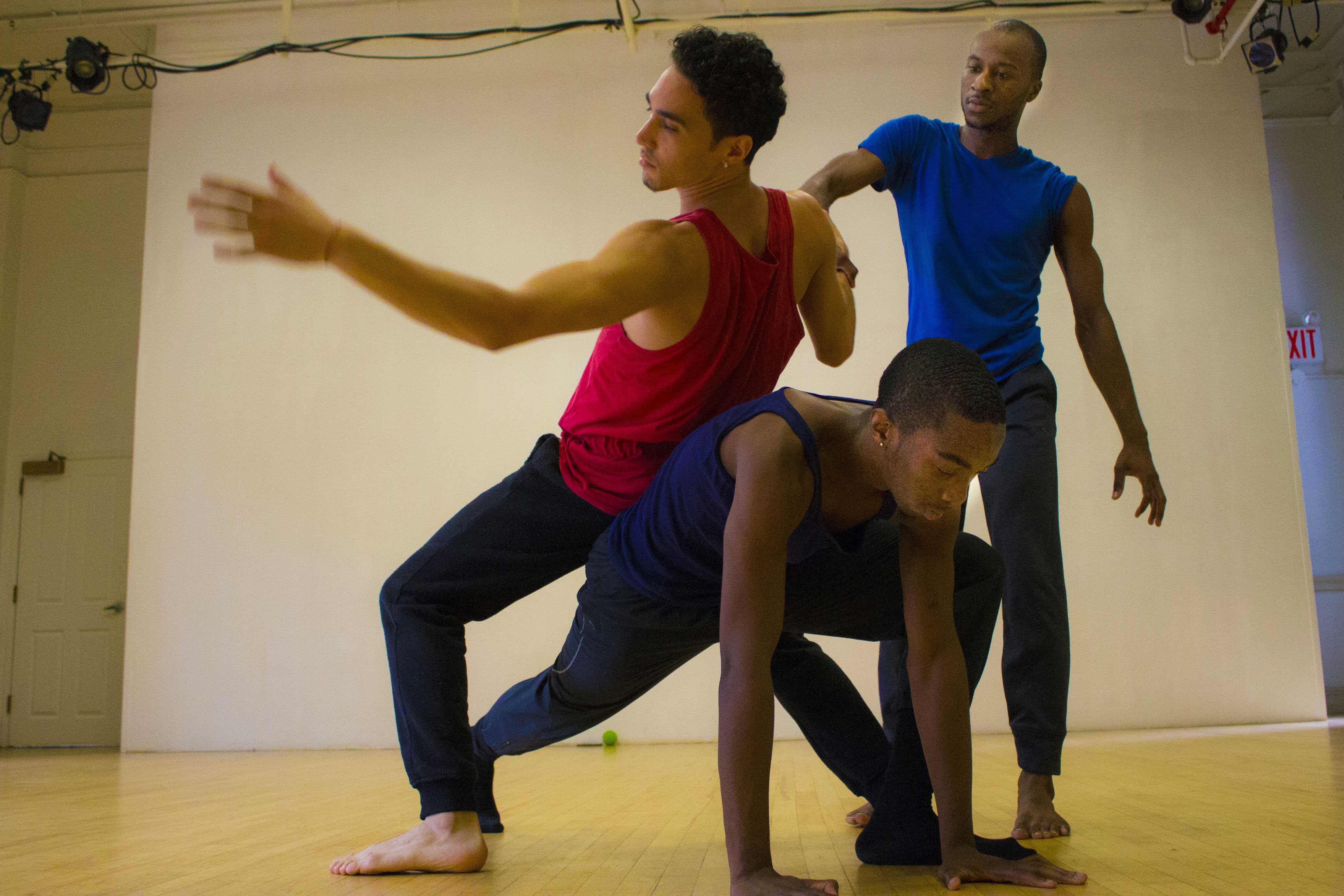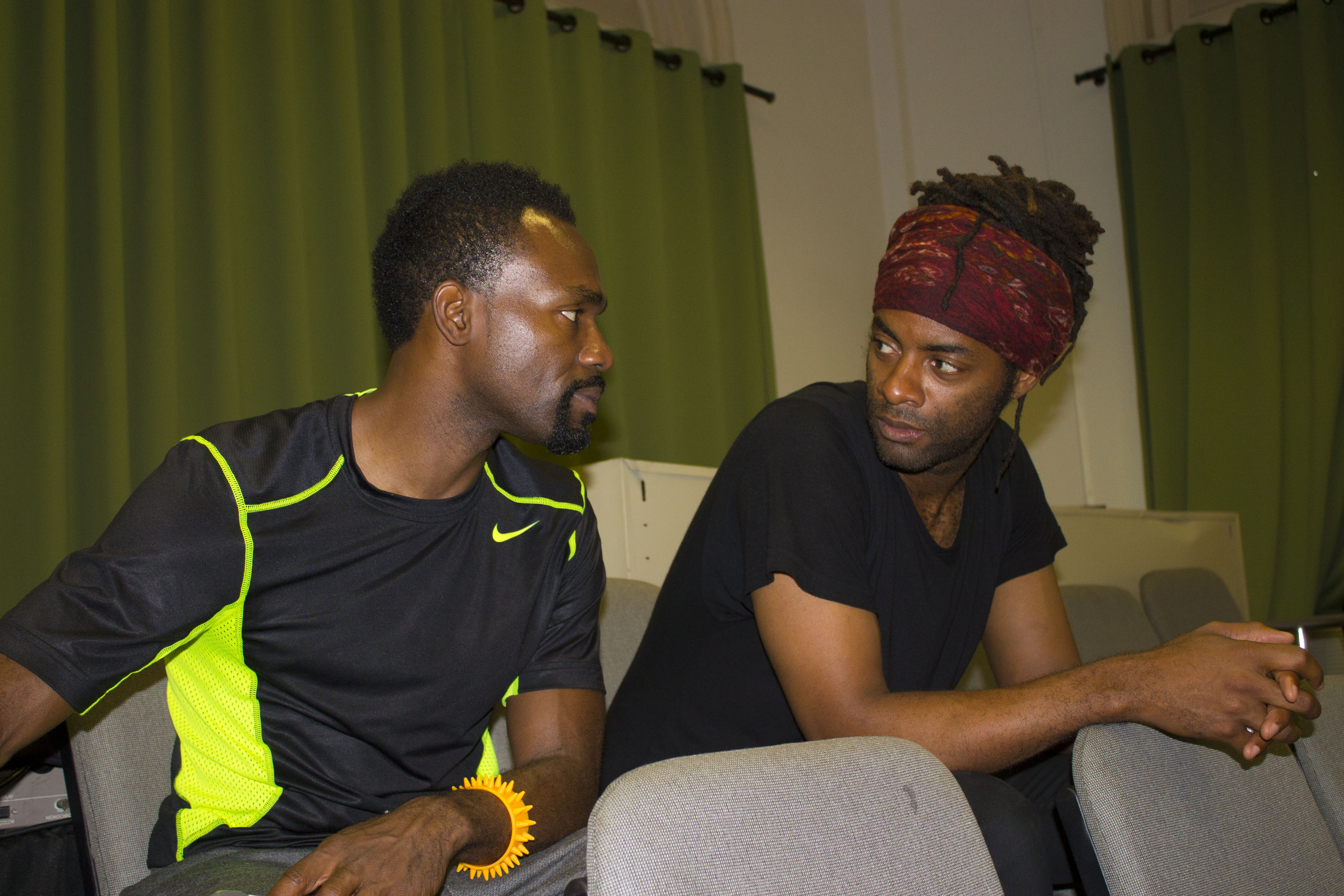
BY ZACH WILLIAMS | “Five on the Black Hand Side/Dapline!” generates plenty of punch from the intricate handshakes most commonly associated with Black men.
They called them DAP during the Vietnam War, when Black soldiers found that “dignity and pride” could maintain their social cohesion during times of trauma — whether looking for enemies in the jungle or battling racism within their own ranks.
Visual artist LaMont Hamilton and choreographer André Zachery take their audience through action more abstract, but every bit as animated, as any recreated battlefield. Their collaboration directs its fire through the traumatic trajectory of the African American experience in the last half-century. There were the racial struggles of the late 1960s and the drug epidemics of the 1980s, and plenty of troubling times before and after. But it was in Vietnam where inner city Black draftees found a means to strengthen their ranks against White soldiers who ostensibly were on their side — but could sometimes loom as dangerous a threat as the Viet Cong.
“There were a lot of soldiers killed where the cause wasn’t friendly fire. It was race wars, and the DAP came out of that,” Hamilton said in an interview. “DAP was a way to show that solidarity. DAP was a way to watch each others’ back.”
Sometimes before or after a mission, a dozen or more Black soldiers would assemble and form a “dapline,” where they would perform the elaborate gesticulations in rituals lasting as long as 20 minutes, according to Hamilton. A fist bump could start a sequence of interactions — with symbolism as direct as two touching shoulders establishing a mutual commitment to watch each other’s back, or as subtle as the thousands of combinations observed by Hamilton.
Unlike a secret handshake, the practice is visible for all to see, even if they are not themselves initiated into the act. Perhaps no person has studied the topic as thoroughly as Hamilton, whose research took him to Los Angeles, Detroit, Omaha, New York City, Chicago and elsewhere during his time as a fellow at the Smithsonian Institute. What he found inspired him to give his fascination a fresh representation, by developing “Dapline!” — where a ritual of unity and recognition continues to evolve as Hamilton and Zachery throw new variations into their dancers’ movements throughout the performance.
Where the meaning of words cannot venture, dance provides an opportunity to explore the full spectrum of race, gender, and society at large.
“Dance is the physical manifestation of the space between words…where it comes together. It creates something and then, it’s over,” said Zachery.
Despite its inspiration, the performance will not demonstrate DAP overtly, nor will audience members simply sit in their seats and watch dancers as ten-figured grips send them flipping over one another. The former will “be implicated,” as the performance reflects the history of DAP, while not explicitly portraying it.
The comradery of war gives way to the struggles of Black liberations. The poetry of Amiri Baraka inspires the movement just as much as the greetings of recognition between gang members. The pedagogical intentions of Paulo Feire (author, “Pedagogy of the Oppressed”) linger above the action, ready to open minds — just as eagerly as a dapline informs participants that they’ve found a safe space.
There is not so much a plot as a “narrative,” said Hamilton — who, like Zachery, opted to speak more of artistic vision than the literal play-by-play of this 40-minute performance.
The origins of the work are less obscure. Hamilton confided that his fascination with DAP began following a conversation with a Black Vietnam veteran during an artistic residence in Omaha, Nebraska. He had dapped with his father, uncle, nephew and even complete strangers — but the more he researched the origins of DAP, the more universal its implications seemed, he said. He still continues to search for just how far the “connective tissues” extends among soldiers, Black liberation rebels and millions of Americans.

Yet despite the ubiquity of DAP, its underlying power was left behind by its appropriation from the “dignity and pride” of Black culture under constant threat, according to Hamilton.
“When we see youth, athletes, or even President Obama giving a fist bump or DAP, we think of these gestures as mere greetings, and are not aware of the origins and historical significance of this language,” he said in a statement from University Settlement, where he and Zachery work as artists-in-residence. Upcoming performances of “Dapline!” are mere previews of the wider “Five Fingers on the Black Side” project, where Hamilton will continue to explore the topic through other artistic mediums including, narrative, music and poetry.
The boundaries among artists, performers and audience will continue to dissolve as local youth continue to explore their artistic horizons under his tutelage, and local art enthusiasts can see just how far down the DAP wormhole they wish to travel. Hamilton and Zachery may fly high in the abstract, but the rewards could be lofty for adherents to authenticity who want history to (quite literally) jump in their face.
At 8 p.m. on Thurs., July 30, Fri., July 31 and Sat., Aug. 1. At University Settlement’s Speyer Hall (184 Eldridge St. btw. Rivington & Delancey Sts.). For tickets ($15, $10 for students and seniors), visit brownpapertickets.com.

















